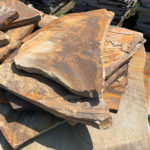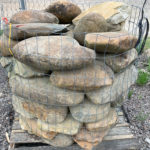
With the arrival of autumn, brisk temperatures will soon be approaching. Your regular lawn maintenance routines will likely change as you prepare for upcoming cooler weather. While it’s easy to forget about certain tasks such as mowing your lawn, keeping your lawn properly cut is just as important during the cooler season as it is during the summer months. As you may presume, lawn maintenance during the fall and winter looks a bit different than lawn maintenance during the spring and summer. In this guide, Carolina Fresh Farms walks you through the best lawn mowing tips as you prepare your yard for the remainder of the year.
Why Should You Mow Your Lawn During the Fall?
Before we explain how to mow your lawn during the fall, let’s first discuss why mowing your lawn before winter is important. Generally, grass will stop growing once the temperature drops below 50°F during the day. While some cool season grasses will continue growing through even colder temperatures, it’s normal for warm season grass to stop growing anywhere between October and December. Once your lawn stops sprouting, mowing your yard will give your lawn a tidy appearance for the winter. Additionally, mowing your lawn before winter will promote healthy grass as the temperatures begin to drop. As a result, you can expect a healthy, flourishing lawn in the spring.
In addition to mowing the lawn, homeowners should consider fertilizing the soil before winter. Moreover, you may continue watering your lawn, as well as controlling weeds.
How to Mow Your Lawn in the Fall
Mowing the lawn is one of the many lawn maintenance routines homeowners should continue to follow even as the temperatures drop. Although your lawn won’t need to be mowed as frequently during the fall, it is still important to mow your lawn up until a week before the first frost. By properly mowing your lawn during the autumn season, you can ensure your lawn is well-prepared for the cold months ahead.
Switch to a Higher Mowing Height
During the fall, one of the most important steps to preparing your lawn for winter is mowing the grass higher. Refer to the normal mowing heights for each grass type below or visit our Care page for more details. We typically recommend setting your mower at the highest setting. Make sure your lawn mower’s blades are sharp to encourage a clean cut. Be careful not to mow your grass too short as this can make it vulnerable to disease outbreaks. Don’t remove more than a third of the leaf blade in one mowing.
Bermuda – 1–1.5 inches
Centipede – 1.5–3 inches
Fescue – 2 inches
St. Augustine – 2–3 inches
Zoysia – 1–1.5 inches
Continue Mowing Your Lawn Throughout the Fall Season
A common mistake homeowners make is assuming their lawn’s growing season is over as soon as the temperatures drop. While grass may eventually stop growing once temperatures drop to 50°F, your lawn may continue growing into late fall or early winter. For this reason, it’s important to continue mowing your lawn throughout the autumn season or perhaps even longer. For best results, continue mowing your lawn until it appears the grass has stopped growing.

Mow Your Lawn Every Two Weeks
As the grass stops growing as rapidly, you will no longer have to mow your lawn as frequently. Rather than mowing your lawn once or twice a week, you can shorten your lawn mowing schedule to every two weeks. Keep in mind that every lawn is different, and some grasses may need mowing more frequently than once every two weeks. Similarly, the region you live in can influence how often you need to mow your lawn before winter.
In summary, mowing your lawn as temperatures begin dropping is just as critical as mowing your lawn during the summer. By prepping your lawn for the upcoming winter, you can promote healthy grass and a neat, flourishing lawn.


